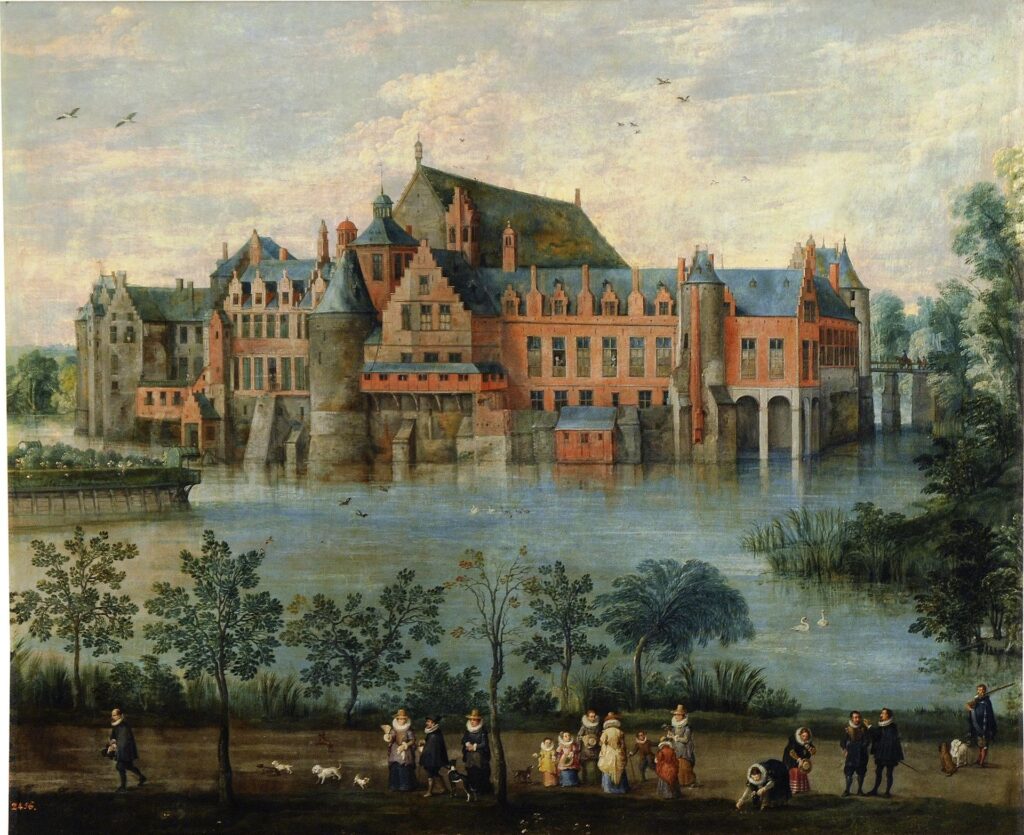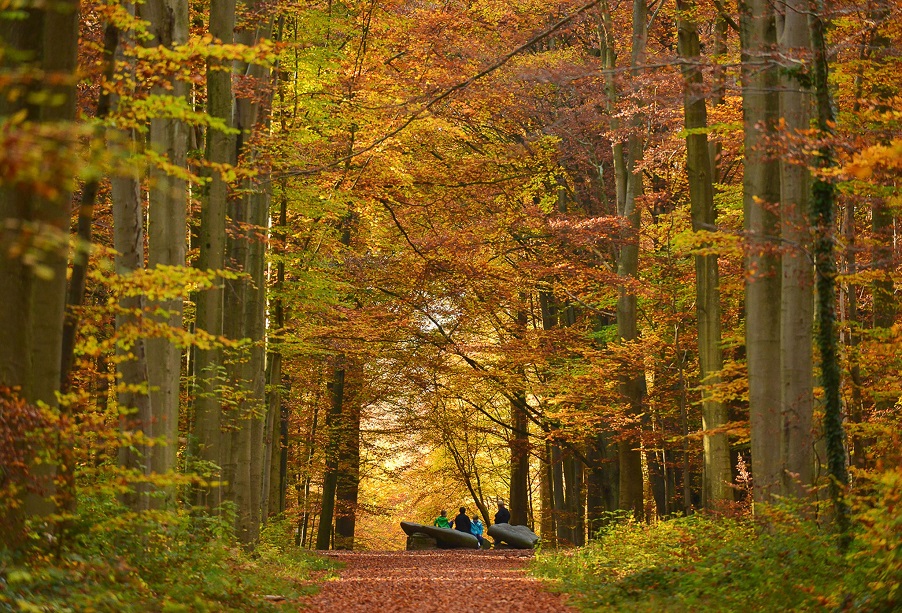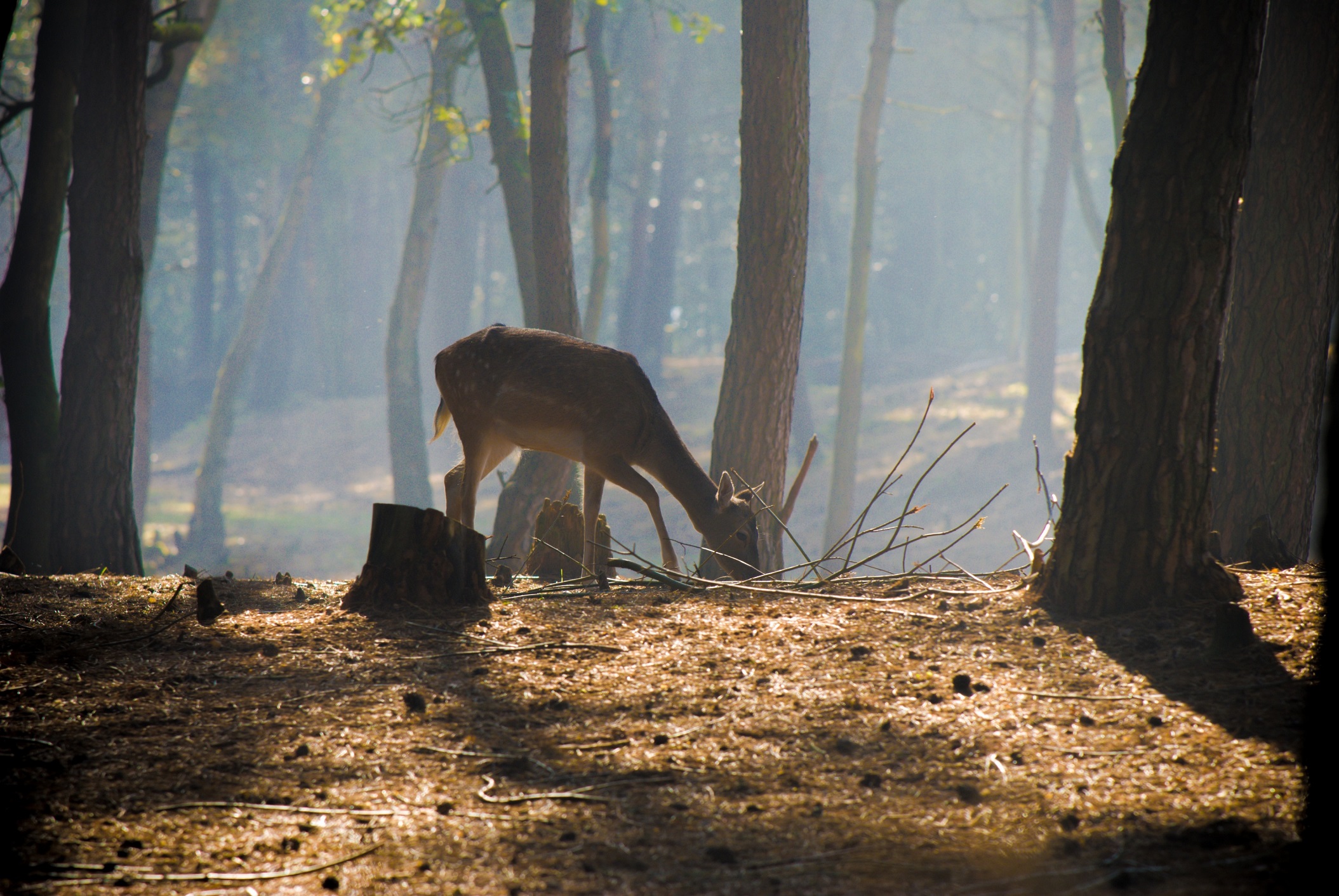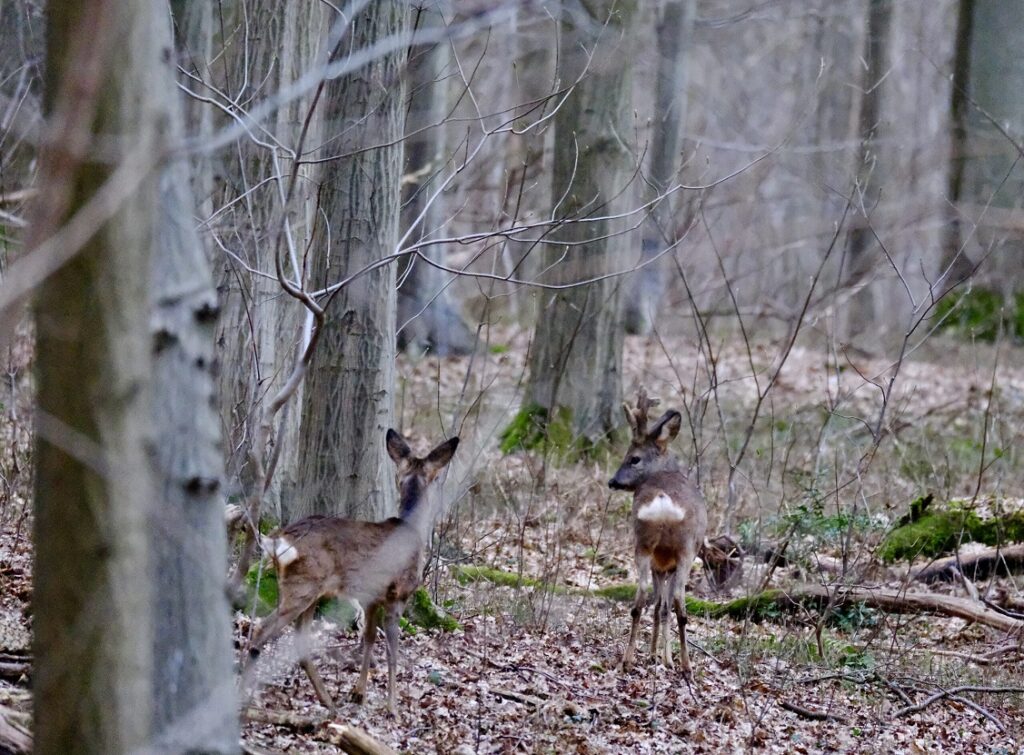“Let me ask you a question. What do you see?” archaeologist Pieter Rodts quizzes me.
We’ve stopped along a trail in the Groenendael region of the Sonian Forest, the green lung of Brussels. All I see are the pale and towering trunks of beech trees, the leaf-covered trail before us and the occasional cyclist.
Then Rodts looks pointedly towards our right, where the earthy ground slopes upwards behind the first line of trees.
“A wall?” I hedge.
“Not just any wall,” he corrects excitedly, “a double earthen wall with a ditch in between. It’s super rare.” He gestures for me to follow him off the trail, and we scramble up a steep earth wall. From the raised vantage point, I can see that the ground behind it indeed dips low into a shallow ditch, and then rises up again with a second earth wall. Without climbing on top of it, I would have never spotted it from the trail.
“You have to imagine the structure 250 to 300 years ago,” Rodts explains. “They would have dug the ditch one-and-a-half metres deep, and then made each wall one-and-a-half metres high. So if you ended up in the ditch, it actually felt three metres deep.” Records even show that the whole barrier was topped off with thorny blackberry hedges.
Rodts explains that the structure was part of a network of mostly single walls that once existed throughout the Sonian Forest to keep wild animals off agricultural lands and cattle out of the forest. The remains we stand on are one of only two double-wall structures that still exist in all of Flanders.
Ancient timber
In medieval times the Sonian Forest was the property of the Duke of Brabant, and later the Habsburgs. The ancient forest’s timber made up a sizeable amount of their budget and its wildlife created the opportunity for hunting, which at the time was a favoured sport for nobles. Its solitude also made it an attractive land to build monasteries and convents. Like farmers, monks and nobles also had vested interests in keeping wolves, deer, wild boar and rabbits within the forest and off monastic lands. Hence the walls.
Though it might seem like a simple barrier, Rodts considers the Groenendael double wall as proof of human-animal communities: the underrated interaction that exists between humans and animals, and how it shapes the landscape. Though at first thought it might seem that these interactions are just impositions – humans imposing limits on animals – Rodts believes that this perspective ignores the existence of real animal agency, and how it has impacted our history.
Rodts first thought of this concept when he walked past the remains of a 15th century stone wall that used to encircle a 14th century priory not far from the Groenendael double wall.

A 15th century wall in the forest
“I thought that this wall is here because people built it,” he says. “But animals played an important role. If there weren’t any animals, the wall would never have existed.” The behaviour of animals, like how high a wolf or deer can jump, would have also determined how high the walls and how deep the ditches must be to form a true barrier. There is a push and pull to the interaction between humans and beasts powerful enough to influence what we build and why.
“And that made me think that we should recognise the agency of animals both in history and today,” he adds. “I think it would give us a more correct view of the world and change our perspective on animals as not just objects to be used, but truly fellow dwellers that also shape the ecosystem around us.”
Animal exchanges with humans
In fact, the way the Sonian Forest looks today is the result of centuries worth of human-animal communities. In the late 12th century or early 13th century, the Duke of Brabant built a moated castle in Tervuren which eventually became a hunting lodge for the Habsburgs with a well-maintained game reserve. The gamekeepers kept the animals in good health to make hunting as enjoyable as possible, but the nobles did not necessarily want to work too hard.

Tervuren Castle, painted by Jan Brueghel the elder
Indeed, in the 16th century, Habsburg Emperor Charles V ordered the planting of beech trees, which had tall and smooth trunks to provide visibility for hunting. Their crowns also blocked out more sunlight, which reduced the underbrush, making it harder for wildlife to hide and easier for hounds and horses to get through. Some 500 years later, Rodts and I stand beneath trees whose existence was still the result of this decision.
However, this change in flora did not always help the surrounding fauna. Less undergrowth made it harder for animals to hide, raising their stress levels. In turn, this impeded procreation, reducing the animal population as a whole – which then made hunting less fun.

The Druid stones in Tervuren Park
“They did not completely abandon this forest management plan,” Rodts says. “But they amended it to better suit the animals. It’s another beautiful example of the role of animal agency with the asymmetrical human-animal relations that existed within the human-animal communities.”
Another tactic came in the middle of the 18th century, when Charles of Lorraine, governor of the Austrian Netherlands, ordered the building of a dense network of trails wide enough to host giant hunting parties with carriages. These trails intersected at large crossroads with infrastructure to switch tired hounds and horses with fresh ones. Most of the paths Rodts and I follow were cleared in the 18th century for this very purpose.
“Yet another instance of how these human-animal communities changed the landscape,” Rodts explains. “Humans made a change, the animal community reacted, and humans had to come up with another plan – they had to actively engage with how animals live in the forest, and this shaped the environment.”
Vestiges of the hunts
Some hunting parties lasted for days, while others were much more ruthlessly efficient. Artwork testifies that as early as the 16th century, nobles had large arenas dug into the earth of the Sonian Forest to drive wild animals into a narrow space. They were cordoned off with heavy drapes of linen, and then the shooting began.
This spectacle continued until the French Revolution but only left shallow depressions in Tervuren. What Rodts discovered, however, were additional ditches dug into the sides of some arenas, which he suggests were used to funnel animals more directly into the shooting space. “I think they’re too straight to be anything nature or animal-made,” he says.
Rodts found the ditches by analysing the area with a digital elevation model (DEM) of Flanders, which maps the topography of the region using LiDAR technology. Like the Groenendael double wall, these features are often too eroded to be spotted by the naked eye. Few visitors have any idea that the pile of earth is actually a three-century-old archaeological site.
It’s not just the passers-by who are unaware, however. Rodts talks about an official tour guide who walked right past the earth wall without noticing it. Even worse, Rodts points to a giant gouge in another wall where forest management used a tractor to plough straight through, probably to pull a fallen tree out of the forest.
“Things like this are a shame because it could have been avoided if this knowledge had just been incorporated into the management plan,” Rodts sighs. “That’s why I think it's important it gets attention.” Unfortunately, the walls aren’t the only ones disappearing. Before the French Revolution, the Sonian Forest covered 12,000 hectares. Now it’s just 4,000.
“That means a lot is gone. But we still have a lot left, and we have to preserve it,” he says.
Animal tales
The forest that remains has a story to tell, even if some parts are only detectable with a DEM. Later on, Rodts shows me an 18th century map of the Flemish town called Dworp, a few kilometres west of the Sonian Forest. The map shows a trail that wound through a plot of trees and then across a field to intersect with a larger road. Today the trail no longer exists. On the DEM, however, its shape can still be traced through the trees down to the fields, where it disappears even on the topographical map. Since the 18th century, these fields were likely ploughed and subjected to agricultural activity, which would have completely eroded the trail.
“The forest, which was left alone, is a speaking landscape,” Rodts explains, pointing to the illustration of little green trees on the map. “It still tells its story centuries later. But the rest, which was used and abused by humans, is a silent landscape. You can’t see what happened before — it’s gone forever.” We can only speculate on how much of the Sonian Forest has also gone quiet due to uninformed human activity.
When the landscape goes quiet, it turns out that trees lose their voices, too. In a natural setting, trees communicate with chemical, hormonal and electrical signals sent through underground fungal networks in what some people call the “wood-wide-web.” German forester and author Peter Wohlleben was the first to explain this to a general audience in his book titled The Hidden Life of Trees.
“However, when we step into farm fields, the vegetation becomes very quiet,” he writes. “Thanks to selective breeding, our cultivated plants have, for the most part, lost their ability to communicate above or below ground — you could say they are deaf and dumb — and therefore they are easy prey for insect pests. That is one reason why modern agriculture uses so many pesticides. Perhaps farmers can learn from the forests and breed a little more wildness back into their grain and potatoes so that they’ll be more talkative in the future.”
Echoing Wohlleben, Rodts says that the first step in letting nature become more talkative is by changing our perspective: “If we shift our mindset, which is very anthropocentric, it could ultimately be a tool to fight the biodiversity and environmental crises we’re facing.”
Nature is chatty, and when we finally listen to its wildness, it does more than speak its mind. Places like the Sonian Forest have been our bookkeepers since the last ice age. By respecting wildlife, by interfering more delicately and by paying closer attention, we’re saving not just the environment, but our history.


